#48 about me — Theory
Narcissism Today

This essay is an adapted excerpt from the conclusion to Matt Colquhoun’s Narcissus in Bloom: An Alternative History of the Selfie (Repeater Books, 2023).
Read more
This essay is an adapted excerpt from the conclusion to Matt Colquhoun’s Narcissus in Bloom: An Alternative History of the Selfie (Repeater Books, 2023).
Read more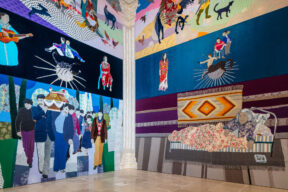
In the endless Zoom calls, especially during the pandemic, one had to navigate the time zones. Setting your meeting to CET—Central European Time—you see many cities listed, including Amsterdam, Stockholm, and Rome, but almost never Tirana, Kyiv or Warsaw, which are part of the former Eastern bloc…
Read more
Photography and the tourist set out almost simultaneously on a journey through history on the threshold of modernity. They walk together and transform each other through mutual interactions…
Read more
It seems that at least during the last decade, the dynamics of social networks are dictated by a vast number of viral movements. These, however, are not only games endowing their users with self-expression in the digital environment, but they speak of something deeper which is linked to a change of contemporary subjectivity…
Read moreIn an article from the book Metamorphoses: Towards a Materialist Theory of Becoming, philosopher Rosi Braidotti explores the complex relationship between feminist theory, digital identity and the urgent social challenge posed by the rapid development of technology…
Read moreThe concept of empathy is notoriously undefinable. In the literature, we can find several dozen definitions trying to capture this alleged ability to relate to another person, as if there is no consensus and every author creates a new definition…
Read more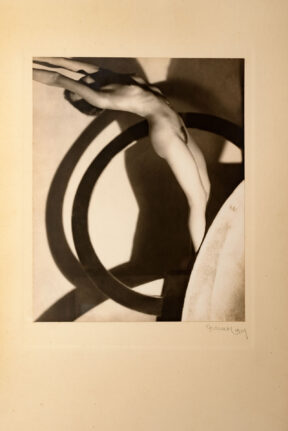
The auction sales of photographs have seen several record sums in the first half of this year. A print by French artist Man Ray has become the most expensive photograph in history and after more than eleven years, František Drtikol’s Temné vlny broke Czech photography’s record at auctions abroad…
Read more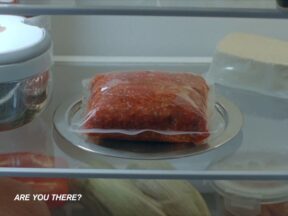
When I first heard about “cultured meat”, it was in 2018. Back then I was living in New York, working for the Research & Development department at the Museum of Modern Art – no global pandemics, no war in Ukraine… it feels like it was aeons ago…
Read more
The invention of stabilized photographic processes is said to have coincided with the growing fear among painters that they would lose their jobs, a subject covered by a number of authors, the most well-known of whom is Aaron Scharf in his Art and Photography…
Read more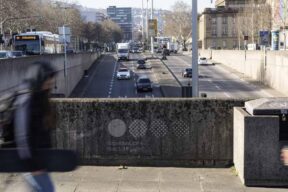
Climate change research depends on a vast array of material data sources, yet its public discourse is dominated by generic data visualizations detached from sensory experience…
How to talk about politics of healing and hapiness? How to awake the desires that make it impossible to settle for anything less than a fulfilling life? In her introduction to an edited volume “Pleasure Activism: The Politics of Feeling Good“, adrianne maree brown draws back on the black feminist tradition, shows how politics can feel good and how what feels good always has a com-plex politics of its own…
Read moreThis text seeks to open up some tensions between counting the dead as a mode of speaking truth to power and the racialized logics of which deaths count in such operations. In doing so, it seeks to open a way to considering how the dead may come to count differently…
Read more
“People say women forget about the pain of labor, due to some kind of God-given amnesia that keeps the species reproducing. But that isn’t quite right—after all, what does it mean for pain to be ‘memorable’? You’re either in pain or you’re not…
Read more
The basic characteristic of utopias is their infinite deferral—their collapse, unreality. Phantasms, however, are ubiquitous, constant, and unendingly rearticulated over and over in unexpected moments…
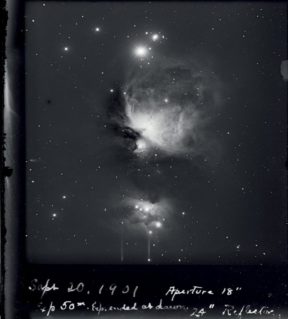
The Ancient Greek nymph is a creature half human and half in possession of cosmic elements. In this day and age contemplating such mythologies becomes considerably relevant…

When the symposium The Art of Exhibiting Photography took place in Brno in 1983, where Josef Moucha introduced the phenomenon of expansive photography, developed by his Polish colleague Jerzy Olek, the Czech and Slovak professional public was also informed of the ambitious exhibition The Family of Man through a review by Petr Tausk, published in the symposium proceedings…
Read moreThe historical distinction between the true and false, between reality and fiction, between science and art, must fall. And it is precisely this abandonment of ontological, epistemological and ethical-political discernment, or criticism, what we mean by “post-history”…
Read moreVe věku svrchované vlády digitálního obrazu je metaforická „smrt fotografie“ proklamována tak často a s takovou jistotou, že se téměř zdá být na slovo vzatým faktem.1 Je tedy do jisté míry perverzní, že fotografie se na tento rozsudek smrti z úst historie a technologie rozhodla zareagovat tak, že podle všeho zavinila velice skutečné, královské úmrtí…
Read moreIntroduction
Much of the literature on tourist photography is highbrow, derogatory and
incomplete. Most importantly, it neglects the apirations and endeavours
that tourists put into their photography…
Krajiny, hlavy a nahé ženy se nazývají uměleckou fotografií, kdežto
fotografie současných událostí se nazývají fotografií novinářskou.
Alexandr Rodčenko, Cesty současné fotografie
Jak fotografie pomáhá legitimizovat a normalizovat stávající mocenské
vztahy? Jak je prostřednictvím fotografií uchovávána, přetvářena,
cenzurována a vymazávána historická a společenská paměť?
Allan Sekula, Fotografie mezi prací a kapitálem…
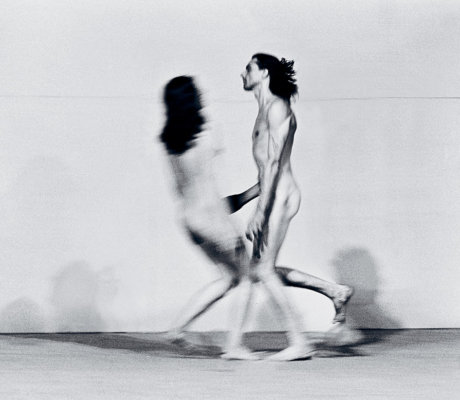
I was not yet three years old, living in central North Carolina, when Carolee Schneemann performed Meat Joy at the Festival of Free Expression in Paris in 1964; three when Yoko Ono performed Cut Piece in Kyoto; eight when Vito Acconci did his Push Ups in the sand at Jones Beach and Barbara T…
Read more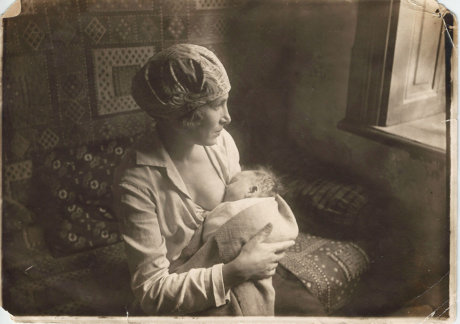
The human body and corporeality have rarely been an object of philosophical research. One reason is that human studies have focused on the concepts of spirit, soul, mind and reflection, i.e. on the processes which are visually invisible, yet concentrated in a physical shell…
Read moreDistrust of authority was the normal state throughout my lifetime. Conformity and mediocrity was exactly what the powers that be wanted of their subjects. A pedestrian future? Far better for the establishment than a rebellious one…
Read moreIn April 2006, Oliver Laric, Christoph Priglinger and Georg Schnitzer founded their blog vvork.com. They were four unknown students who set a single rule: to publish a picture of at least one work of art per day…
Read moreI am obsessed with politics and power. It’s a journalist thing. So what I want to talk about tonight is how human memory got mixed up with politics and power in the recent past, and above all, in the Cold War…
Read more
Baby Island Simulator is a little game for encounters with a baby. To play this game you need a human baby who cannot yet walk, placed on a large isolated surface like a bed or a kitchen island…
Read more
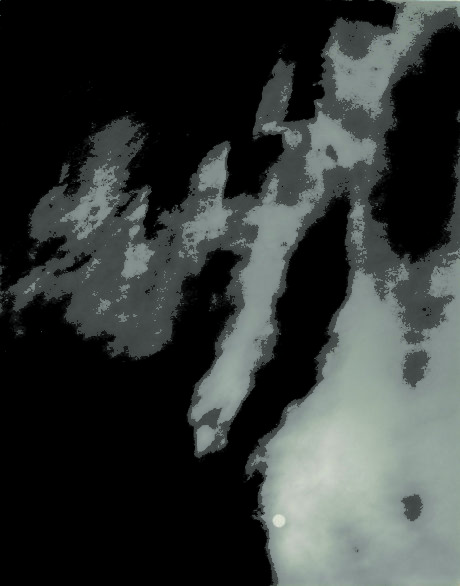
To come to photography from an intense and often embattled experience of modernism is to feel a peculiar sense of relief. It is like coming in from the cold, like leaving a swamp and gaining high ground…
Read more
“…to suspend the object in mid-air, remove the light and the camera,
and to achieve the result that I dream of…”
/Jaroslav Rössler/

Imagine a room bathed in red light, multiple cameras flashing simultaneously, a naked female body, a scientist whose fingers are sticky with vaginal fluids and, at the center of it all, “living” matter – strands, veils and masses of it extruding from the orifices of the medium and then flowing, creeping, jumping and even morphing into objects, organs and images…
Read more
The Principle of Pseudo-documentarism in the Central European and Balkan Post-totalitarian Visual Arts
The present text is in fact an unsystematic diary, as it reflects experiences I gathered during my collaboration with contemporary Central European and Balkan visual artists and exhibiting institutions…
Read more
Digital technologies have given rise to new cultural forms and new models of organizing and storing information. The database has become a significant model for relating to the world, not only as a theme for works of art, but as the medium of their creation…
Read more
In the course of its evolution, documentary photography in the Czech lands gained a specific, firm place and its assertiveness has led to it being generally accepted and the genre established to an unpre- cedented degree (particularly in comparison to other genres of photography), but this has also lead to the partial displacement we observe today, the separation of the artist and the breaking away from reality…
Read more”Dear diary…“ It would probably prove as difficult as it would be foolish to try to find an equivalent of this diary catchphrase in terms of visual language. This traditional rhetorical flourish is used to address one’s diary as an imaginary partner in intimate dialogue, verbalizing one’s need to bear testimony and share one’s subjective experiences, impressions, emotions, ideas, visions, etc…
Read moreAbout thirty years ago, photography began to fill galleries more frequently, including galleries not specializing in photography. At the same time, photography began to be studied at universities, and photographs began to be sold for considerable sums of money…
Read moreOne of the reasons to associate music with photography is a certain physical similarity between the two media. Both represent the oscillation of energy of varying wavelengths and degrees of intensity: tones as the mechanical oscillation of air acting upon our hearing apparatus, and light as the electromagnetic radiation perceptible by our eyes…
Read moreItalian cultural historian and theorist Carlo Ginzburg is primarily known for his “microhistorical” studies – texts dealing with everyday, local and individual events, people or communities. Through his particular stories, Ginzburg demonstrates more general problems of given periods; his reconstruction of the past in its uniqueness is motived first by the effort to uncover the ways people acted, perceived and thought in specific situations…
Read more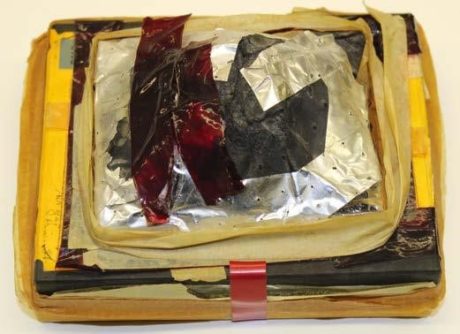
The Ontological Question
The most frequent response to the above question — What is photography? —is latent in the etymology of its name and recurs from the very inception of photography until the present, or at least until the advent of digital photography…
Read more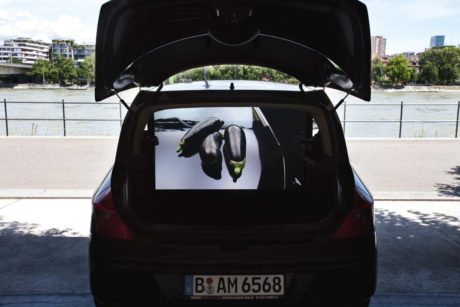
“The twentieth century began with utopia and ended with nostalgia,” wrote Svetlana Boym in the introduction to her essay “Nostalgia and Its Discontents”. This assertion can be read as a description of a loop, of cyclical time, ideologically distant from the established conceptions of linear development…
Read more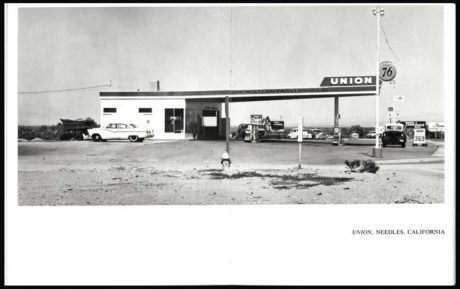
Ed Ruscha’s books are puzzling. While his paintings find a plausible interpretative context in the work of Jasper Johns and Pop Art, his books are more often viewed as proto-photo-conceptual. Ruscha’s response to these attempts at categorization has been to distance himself from both pop and conceptua art, but he has always acknowledged the importance of the work of Marcel Duchamp, especially in relation to the books…
Read more
The controversies regarding the meaning of prehistoric cave paintings show sufficiently that even if its subject is fully recognizable, an image itself is not immediately transparent. This mammoth surrounded by humans – is it a scene from a hunting story painted by the narrator to illustrate his narrative? Or is it a sequence from a forever forgotten myth referring to the times when humans and animals were still on good terms? Is it an element of a ritual practice aimed at bringing a good catch? Is it a glorification of an animal that was thought to have brought forth one human group? No one can say for sure and it is risky to try to guess an answer by making analogies with what we know about the paintings made by present-day hunting populations living in Australia or in the Kalahari, so vast is the temporal distance separating them from the painters of Lascaux and the Chauvet Cave…
Read moreDespite the alternatives offered, one after another, by a variety of different structural approaches, ever since its inception anthropology has been more or less overtly fascinated by the robust simplicity of etiological explanations…
Read more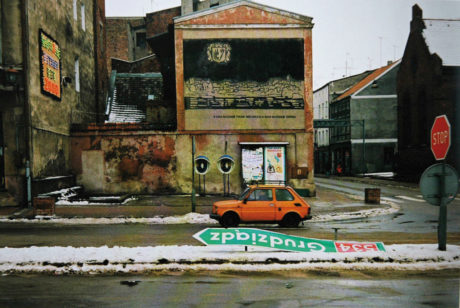
Ve fotografii posledních tří desetiletí je přítomen výrazný proud autorů, kteří se prostřednictvím fotoaparátu zabývají architekturou. Obecně sdíleným záměrem těchto fotografů je dokumentovat a současně interpretovat okolní svět…
Read more*Leo – Czech porn magazine, 12/2002, pp. 29-31.
One of the impulses that made me look closely at pornographic images is their unsettling ubiquity in contemporary everyday life…
Read more
If we were to try to find a single element that divides Eastern European art of the final third of the 20th century from artistic activities in the rest of the world, we would arrive at a desperate and often no more than latent gesture of undefined resistance – resistance as the sole possible tool of defence and catharsis which allowed artists to survive with dignity and at least a grain of authentic artistic freedom…
Read more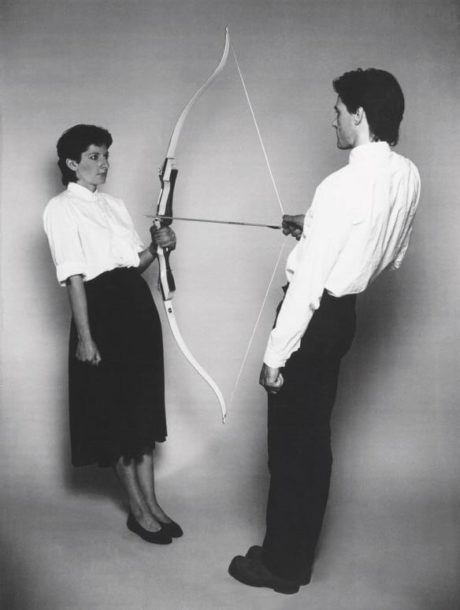
Pragu – New York, 19. 09. 2008
Conceptual Art including Performance Art is based on communication of pure energy. Performing for more then 3 decades and maintaining such a high level of this energy is striking…
Read more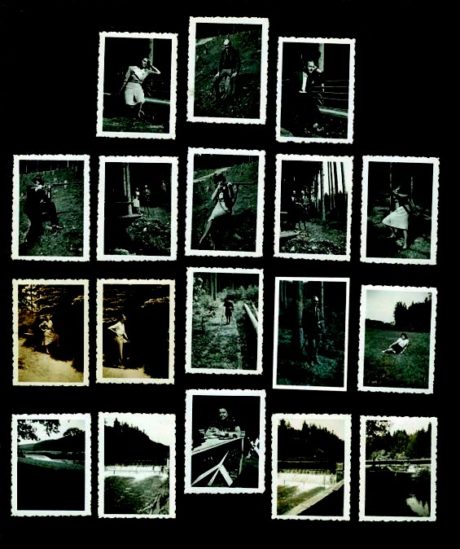
Photographic media’s potential to democratise a gallery of family portraits
did not remain unexploited for long, so today amateur family photos have an irreplaceable role in private visual archives…
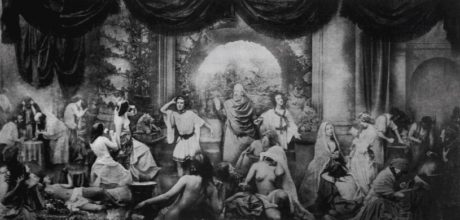
Reconstruction is renovation (re-building). And just as one can rebuild a house, one can also rebuild a photo image. Some reconstruction is so radical that it can be taken for new construction. Reconstruction is subject to a plan, it is thought through, and it changes a situation…
Read more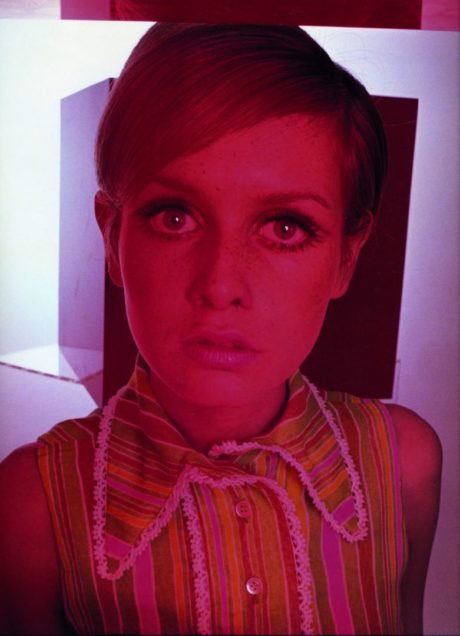
When photographs began to appear on the pages of the world fashion journals, Vogue and Harper’s Bazaar, in the 1920s, they took their place here next to fashion sketches, which they later completely replaced…
Read more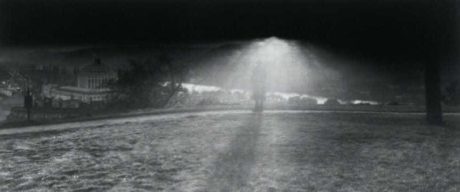
How can we define a town today? One can most certainly say that the age-old comparison of town vs. country no longer works? The countryside has lost its primary agricultural function; it’s not the opposite of a town…
Read more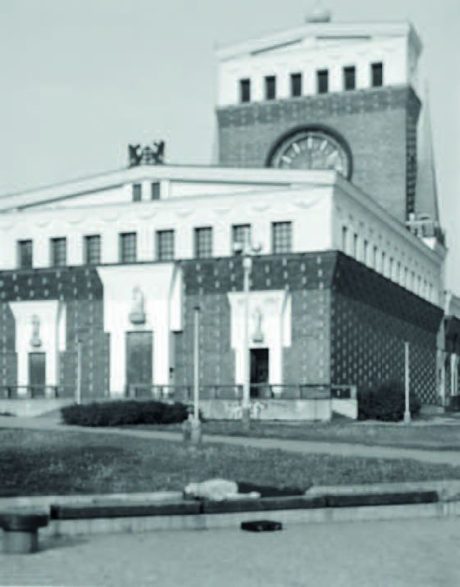
MS: This issue of Fotograf magazine includes a rich selection of image/photo material. Weʼre interested not only in how the cityʼs past compares with its present, but also in how Pragueʼs individual districts are doing from an architectural as well as urbanist perspective…
Read more
It is often said that we live in a society of images. This is thanks to the editors of print media and internet publications, and in part to television shows, and also to advertising strategists, who narrow-mindedly pursue a single aim…
Read more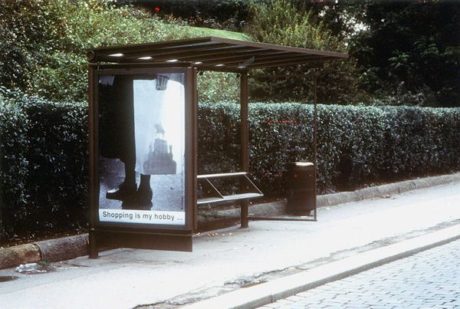
In the last decades, the issue of the relationship between contemporary art and the public has become highly relevant and has been widely discussed; therefore in writing a magazine article one must opt for only a partial perspective…
Read moreIn 1969, the artist Douglas Huebler famously asserted, “I use the camera as a ‘dumb’ copying device that only serves to document whatever phenomena appears before it through the conditions set by a system…
Read more
We live, as is oft repeated, in an era of dispirited faith in the image, which should mean roughly this: the era of the image has a paradoxical culmination, provided one can liquidate faith in the image as an authentic expression, a faith in the image’s authenticity…
Read more
If the term amateur can be typified by anything it is by ambiguity. Or more precisely the ambiguity that it has for its contemporaries. Surely nobody considers himself to be an amateur. Or: Yes, I am an amateur, that is a non-professional, but my creative work does have a professional standard…
Read more
The 1980’s differed significantly from previous decades. The difference of decades is still more apparent from a greater time interval. If we applied this view to the area of Polish photography understood as independent creation, we can say that the tone was determined by the Neo-Avant-Garde, which was fascinated by an analytical approach and which was interested in the visual as the linguistic phenomenon of new media…
Read more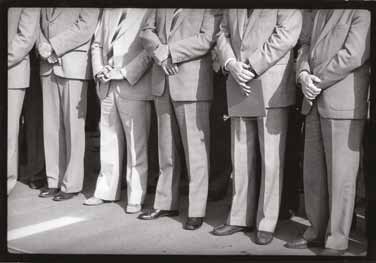
In my mind I recall the 1980’s as being overheated, feverish. Almost no one believed the regime would fall, but all authentic creations and work, all truth was automatically perceived as being subversive, opposing, disruptive…
Read moreI draw on the premise that there exists no definition of photography, because such a definition would have to comprise all the vantage points from which it has already been “surveyed”, from which it is regarded today and from which it will be regarded in the future…
Read more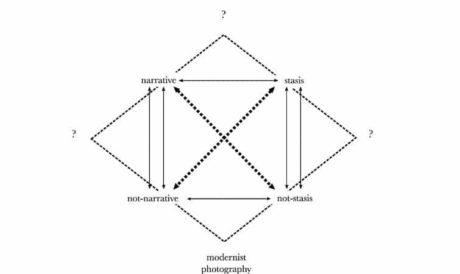
I begin not with a negative, nor with a print, but with a screen. On the screen can be seen a landscape, a campus it seems, identified by cheerful signage and imposing brutalist buildings. This is a screen in motion, as the view begins to rotate, parading before us the series of changing buildings but also the denizens of this place: various youth, students both bohemian and conformist, potential professors, security and police…
Read more